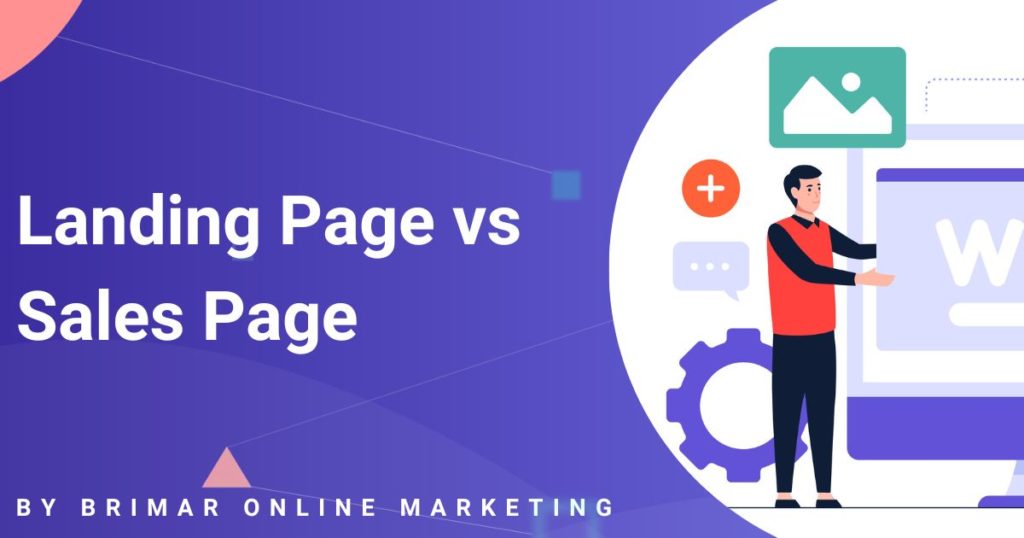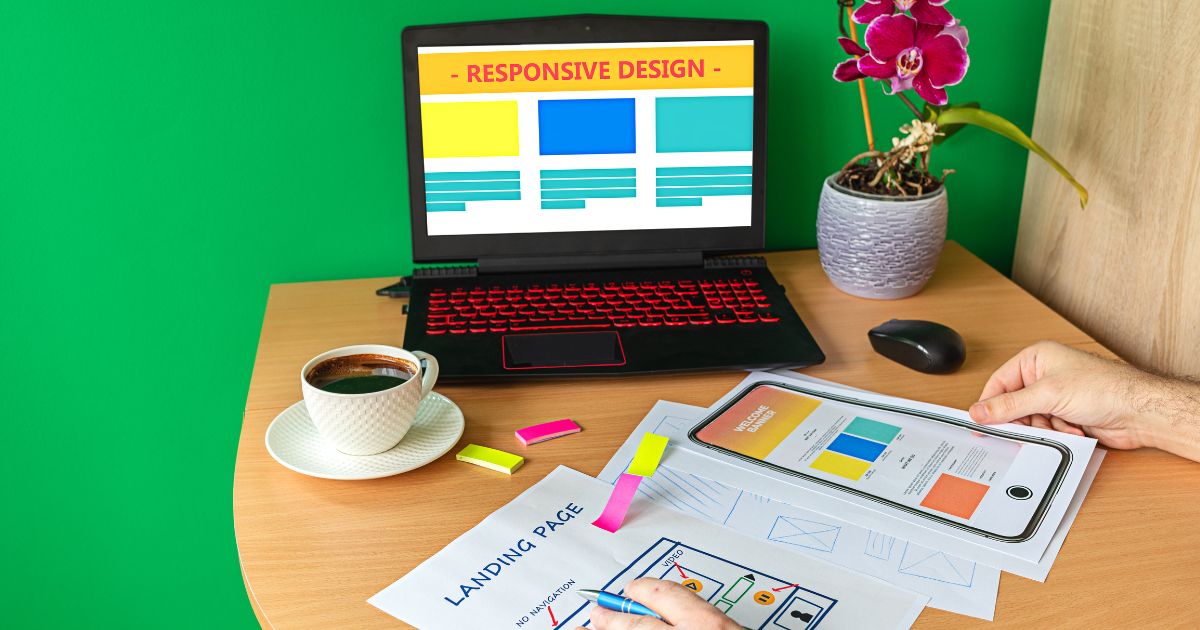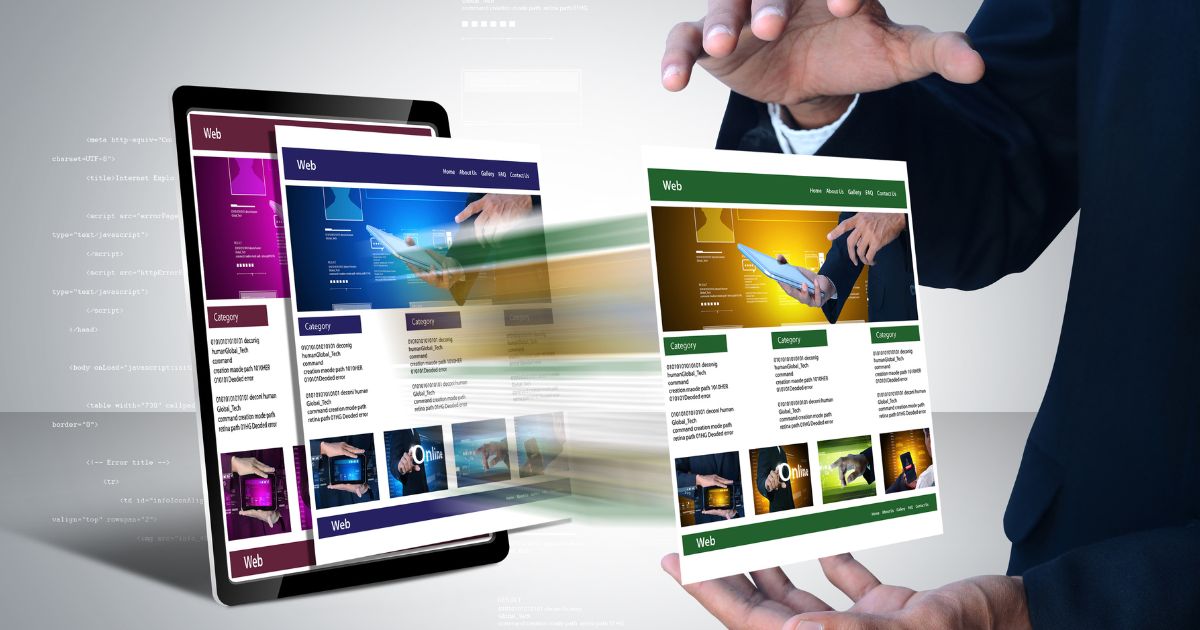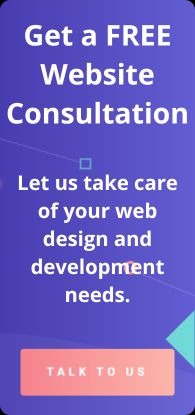
We all know that having a website is extremely important.
However, not everyone understands the differences between a landing page and a sales page.
Each one serves a specific purpose.
So, we have created this landing page vs sales page comparison guide for you to understand their differences a little bit better.
Let’s get started.
What is a Landing Page?
In order to describe better what are the differences between a landing page vs a sales page, you need to know a couple of key concepts.
Let’s start by talking about what a landing page is.
Landing pages, more specifically, post-click landing pages, are standalone web pages that visitors “land” on or are transported to when they click on a link on various platforms, like an email or a digital ad from Google, YouTube, or Twitter.
Visitors click on that link because they’ve decided to follow through with the call-to-action or prompts (more on this in the next section) included in the ad or email body.
Get a FREE Website Consultation
Let us take care of your web design and development needs so you can focus on your business. We can handle new websites, landing pages, website redesign, and even maintenance.
Contact us today to get a free website consultation!
What Are the Objectives of a Landing Page?
As mentioned, every landing page is focused on a specific conversion or call-to-action (commonly called “CTA”) that doesn’t necessarily aim to have immediate monetary returns.
Here are some common examples:
1. Lead Generation
A landing page can serve as an interest page or lead generation tool, where users can sign up if they want to know more about your company, an event, or your product.
2. Webinar sign-up
An excellent way to engage with your target audience is to hold a webinar.
By inviting them to this activity, you can get valuable data through the sign-up while your target audience gains access to an exciting and educational event.
3. Register for a Free Trial
Sometimes, a way to convince your target consumer to purchase your product or service is through a free trial.
Offering one also shows your company’s confidence in what you are selling.
4. Download Something
Add value to your customers by providing helpful resources related to your products and your target market’s passion points.
Tips for Building a Successful Landing Page
These are some valuable tips that you can follow to build a successful landing page.
1. Focus
This means having a singular call to action not to confuse your target audience.
2. Mobile-Friendly
Every page of your website and each landing page should be mobile-friendly since many consumers shop and browse on their smartphones.
3. Keep It Simple
Avoid text-heavy and busy pages.
You don’t need to throw in too many details about your company profile, background, or products on a landing page; that information can be found on your main website.
Maintain a simple design that highlights your reason and call-to-action (CTA).
To make it even easier for users, make the CTA visible by adding a different-colored placeholder, a more visible font, or a conspicuous button to make it stand out from the rest of the page.
What is a Sales Page?

Like a landing page, a sales page is also a standalone page visitors arrive at by clicking a link from an email or ad.
What makes it different is that its primary goal is to convince the visitor to purchase your product or service.
What Are the Objectives of a Sales Page?
As the name suggests, a sales page focuses on making a sale or converting the visitor into your customer.
Here are common CTAs for sales pages:
1. Buy Bow
This, and other variations of this CTA, are straightforward and effective.
It creates urgency for the visitor and is in a simple, easy-to-understand language.
2. Get Exclusive Access
This type of CTA can be used for pre-orders or limited-edition products or services.
3. Enroll Now
If you’re offering training or fitness gym memberships, this is one of the more common CTAs you can use.
4. Subscribe Today
You can use this CTA if you offer monthly or regular products like magazines, food boxes, podcast episodes, etc.
Tips for Building a Successful Sales Page
These are some tips to build a successful sales page.
1. Create Urgency
As you can see in the CTA examples above, you can create urgency using words like now, today, exclusive offer, etc.
With simple words like these and compelling offers, you can persuade your visitors to convert as soon as possible.
2. Make It Simple
Sales pages can be overwhelming, especially long-form ones, but companies should try to create streamlined pages with easy-to-understand graphics.
3. Convince With Client Testimonials or Reviews
Add even more legitimacy to your products by including reviews from actual customers.
You can also include quantitative information, like how much a product has been purchased.
4. Experiment and Spark Interest
Try A/B testing to check which format provides the best conversion.
Work with talented copywriters to create pages that will convey the value of your offers, spark interest, and inspire action.
5. Use Multiple CTA Buttons
Please don’t make the visitor go through the end of your sales page to find what you want them to do.
You can include multiple (and visible!)
CTA buttons throughout your sales page, especially when they’ve already decided to make the purchase, even before going through the whole page.
Expanding on the Purpose of Landing Pages

Landing pages play a crucial role in your overall marketing strategy.
When designed effectively, they are a powerful tool for generating leads and can help guide potential customers through your sales funnel.
A click-through landing page often leads to the next stage in your customer’s journey, helping them decide whether to proceed with a specific action, like filling out their contact information, signing up for a free offer, or purchasing a product.
Different types of landing pages can be employed depending on your marketing goals.
For example, an opt-in page is a great way to gather email addresses and grow your email list.
A well-crafted squeeze page can offer a valuable resource like an ebook or free offer in exchange for user data, which can then be utilized in future email marketing campaigns to nurture potential leads.
Another type of landing page you might consider is a sales landing page, which is specifically designed to convert visitors into paying customers.
These pages often have a single purpose, such as selling a product or service.
The goal of a sales page is clear: convert visitors into buyers by providing relevant information and a clear call to action.
Whether you’re offering an online course, e-commerce store products, or promoting a webinar, the layout and content of your landing page will significantly influence its conversion rate.
Short-Form vs. Long-Form Sales Pages
There are two primary types of sales pages: long-form sales pages and short-form sales pages.
Each one serves a different function and is designed to cater to varying types of customers.
A short-form sales page, for instance, might be more effective for products that are well-known or have a low price point.
In this case, potential customers may not need a lot of convincing to take the next step and make a purchase.
A short sales page often includes a brief introduction to the product or service, strong call-to-action (CTA) buttons, and a simple breakdown of the product’s benefits.
It’s a great fit for online stores selling affordable, straightforward products that don’t require much explanation.
On the other hand, a long-form sales page is better suited for higher-priced products or services that require more in-depth information.
These pages allow you to walk your visitors through the product’s benefits in greater detail, addressing their pain points, explaining how the product works, and offering social proof through customer testimonials and case studies.
A high-converting sales page of this type may even include multiple CTA buttons throughout, ensuring that potential leads don’t have to scroll to the bottom to take action.
Whether you opt for a short-form or long-form sales page largely depends on the nature of your business and your customers.
For instance, if you’re a small business selling a subscription-based online course, you may find that a long-form sales page does a better job of building trust and convincing visitors to enroll.
Conversely, short pages might work better for e-commerce stores or online businesses selling lower-cost products.
Sales Pages and Conversion Optimization

Every web page should have a clear call to action that guides the user toward the desired action.
Your CTA should be prominent and compelling, whether you’re asking them to buy a product, sign up for a newsletter, or request additional information.
Some of the best sales pages include several CTA buttons throughout the page, so visitors have multiple opportunities to take the next step in the sales funnel.
Design elements like color, layout, and font choice can also significantly impact conversion rates.
For example, contrasting colors for your CTA buttons can make them stand out more, encouraging visitors to click through.
Similarly, breaking up long blocks of text with bullet points, images, and graphics can help to keep the page visually engaging, which is especially important for long-form sales pages.
Another important consideration is mobile optimization.
With more and more users browsing and shopping on mobile devices, your sales pages must be designed to look and function well on smaller screens.
Mobile-friendly pages tend to rank better in search results, offering a better user experience, which can lead to a higher conversion rate.
The Role of Social Proof and Trust Elements
One of the most effective ways to convince website visitors to convert to a sales page is by offering social proof.
This could be customer testimonials, case studies, or even statistics about how many people have purchased your product or used your service.
Including these elements can help build trust and demonstrate the value of your offer.
For business owners promoting a product or service that solves specific pain points for their customers, customer testimonials can be a powerful tool in persuading visitors to take the desired action.
They show that other people—just like them—have used and benefited from what you’re offering.
Social proof is significant on longer sales pages; visitors might need additional reassurance before committing to a purchase.
By strategically placing customer testimonials or reviews throughout the page, you can keep visitors engaged and build trust as they read through the content.
Driving Traffic to Your Sales Pages
Once you’ve built a compelling sales page, the next step is to drive traffic to it.
There are many ways to do this, from paid advertising channels like Google Ads to organic methods like search engines.
By targeting the right traffic source, you can ensure that your sales page reaches potential leads already interested in your product or service.
For example, if you’re running an online business selling online courses, you might run a campaign on social media platforms to attract visitors to your sales page.
Similarly, Google Ads can be an effective way to reach people actively searching for the products or services you offer.
Using targeted keywords and ad copy that speaks directly to your audience’s pain points can improve the chances of driving qualified traffic to your page.
Of course, your landing page vs sales page approach will depend on the specific goals of your campaign.
If your primary objective is lead generation, you may want to use an opt-in page to collect email addresses for future email marketing efforts.
On the other hand, if your goal is to make an immediate sale, a sales landing page with a strong CTA may be the better option.
Whether you’re working with a freelance writer to craft compelling copy or beta-test different versions of your sales pages, understanding the difference between landing and sales pages is vital to building a successful online presence.
By considering the needs of your potential customers, optimizing your pages for mobile devices, and using social proof to build trust, you can create high-converting website pages that drive results.
The Bottom Line: Landing Page vs Sales Page
So, you already know the key differences between a landing page and a sales page.
Both benefit your business goals and are essential to customer success strategy development.
The main difference is that one focuses more on lead generation and engagement, while the other, the sales page, is focused on encouraging users to purchase.
When you think about the cost of building a website, plus the time and effort you put into it, you will have high hopes for it.
More than just increasing your online visibility, your website should also help you achieve other business goals.
When you are clear about your objectives and know your target customer’s journey, you can efficiently work with your in-house digital team or digital marketing agency.
They will help you decide which type of page you need for a specific goal and, eventually, successfully build a functional and efficient website.
We Have Delivered High Quality Websites and Our Customers Are HAPPY!
“Good quality and responsive service. Isaias is a professional person, he is always aware of the needs of his clients. He has always helped me in my projects.”
CEO

